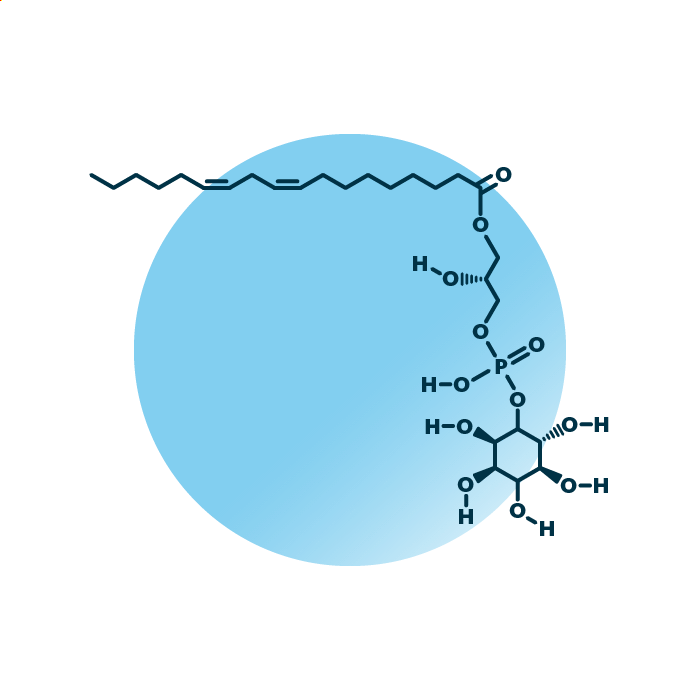About the structure and biological function of LPI
Structure. Lyso-phosphatidyl-inositols (LysoPtdIns, LysoPI, or LPI) belong to the group of ester phospholipids within the phospholipids. Their structure consists of a glycerol backbone linked to a fatty acid and a phosphoinositol molecule. The fatty acid can be of variable length, hydroxylated, and contain double bonds.
Function. Lyso-phosphatidyl-inositols are intermediates in the remodeling of phosphatidylinositols, such as the release of arachidonic acid for eicosanoid biosynthesis. Yet, LPI lipids possess signaling functions on their own. They interact with receptors and stimulate the release of hormones from the pancreas for the regulation of glucose uptake. LPI levels are elevated in highly proliferative cancer cells and serve as biomarkers for poor prognosis in cancer patients. Further, LPIs together with other lysophospholids, are linked to a number of metabolic diseases such as obesity.



